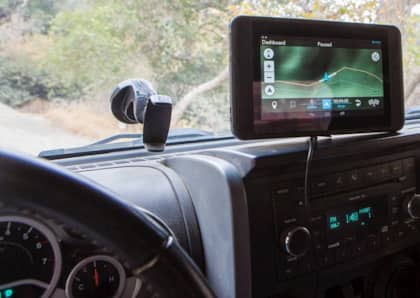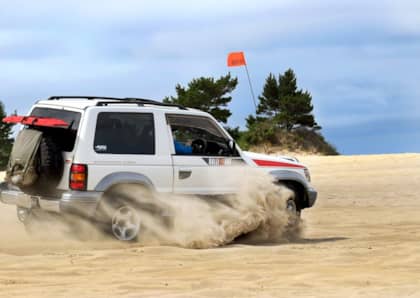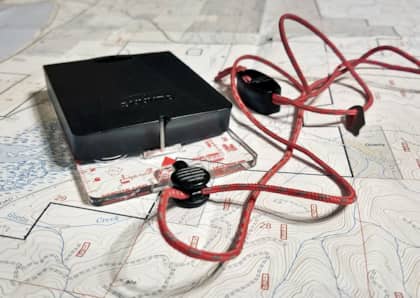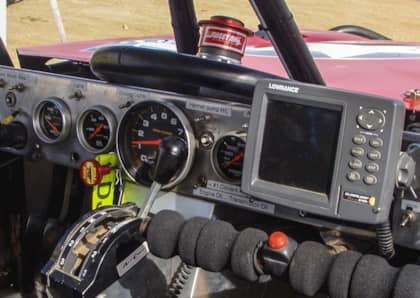Why It’s Important to Adventure Without a GPS
With the advent of modern technology, like smart phones or tablets, outfitted with navigational programs like Gaia GPS, PeakVisor or even Waze, we’ve become heavily reliant on them to tell us how to get from point A to point B. You feel secure, smart and knowledgeable when using them. You know exactly where you are—at all times—until the unthinkable happens. You lose satellite connection, your device breaks or your battery dies and you run out of power. What happens if you’re 200 miles into the middle of nowhere without GPS and have an emergency? How will you find your way to safety?

At those times, minutes turn into hours and hours turn into days of panic and apprehension. You worry you may become a statistic. You’re leery to leave your vehicle because you don’t know which direction civilization is or how to get there. If you knew traditional wayfinding methods, carried a compass and map of where you’re headed to and applied those skills to find your way, it could potentially save your life.

Knowing how to adventure without a GPS is key. It’s an extremely important tool to have, even in today’s world of power cords and battery packs.
Professional Advice
I spoke with a professional educator, Charly Aurelia, who has taught land and marine navigation, emergency medicine, self-protection and communication skills for 30 years. He travels regularly in the backcountry with a map and compass. In fact, he just adventured through North Carolina’s Pisgah National Forest on foot—and didn’t even bring his smart phone. He says it’s important to travel with map and compass because it maintains the primary practice of presence and awareness through the direct mindful experience of place.

Charly holds no belief in the concept of “a sense of direction." He states, “There is no such thing. This was a hot topic in science in the later 1800s, whereas even Charles Darwin weighed in on it with a published paper. What there is, however... is a cultural and personal integration or emphasis on paying attention or the lack of this emphasis.”
Nowadays, we have our heads buried in our smart phones. We don’t really know where we are even if Google tells where we are. We don’t stop and smell the roses anymore. We don’t seem to look at geographical features or terrain that may assist us in our journey back home. We ignore potential hazards as we are toggling back and forth from our GPS and Instagram.
Practicing Wayfinding at the Rebelle Rally
Caroline Seale-Cole, from Ferriday, Louisiana was a Rebelle Rally participant in this year’s competition. The Rebelle Rally is a yearly traditional navigational competition for women. No cell phones, no GPS or Wi-Fi—just maps, a compass and a road book. Caroline was a navigator during the intensive 1,600 off-road rally raid. She thinks traveling with traditional maps and a compass is imperative.
“It’s important because more than anything, it sharpens your wits. You will always have some idea of where you are and where you are going.” In addition to safety, she also says, “You can stay in the moment, and it will not pass you by. As a bonus, you’ll always be looking for land features, points of interest, etc. and you can really, truly enjoy the journey. You’ll be an active observer of every sight that is available to you, and the experience of the journey can be consumed to its fullest.”

During the Rebelle Rally, my team, Team Free Range Dames, partnered up with Caroline and her partner Laura Hardesty in order to navigate through tricky terrain. The most challenging land we covered were the massive sand dunes near Glamis, California.

There’s an art to wayfinding with a map and compass: one that takes patience, know-how, time and observance—especially if you’re seeing similar terrain all around you. We constantly stepped out of our rigs, took bearings to the next large dune, drove to the dune, stopped, got out again and took new bearings. Continually checking your heading (or exact direction you want to head in) helps you stay on course. Caroline loves maps. “They will tell you amazing things if you let them,” she says.

Understanding How a Compass Works
Compasses can be amazingly accurate, but items such as magnets, large iron or steel bodies, or even electronics can affect them negatively. Power lines can also affect compasses. Additionally, avoid iron rich deposits, as certain rocks like Magnetite contain magnetic minerals. As long as you’re aware of what can skew a compass’s needle, you’ll be good to go. If you properly store and use your compass, it’ll work just fine.

“The challenge is often to get people out their own way to understand that they, too, can be present and be successful at wayfinding.” Charly says. If you want to be prepared, no matter if you’re hiking, driving—or even biking—having a paper map of the area you’ll be adventuring through, along with a good compass, could mean the difference between having a good time or getting lost. It could even mean the difference between life and death. Since I’ve learned traditional navigation, I view traveling differently and now bring my map and compass along every time I go out.











